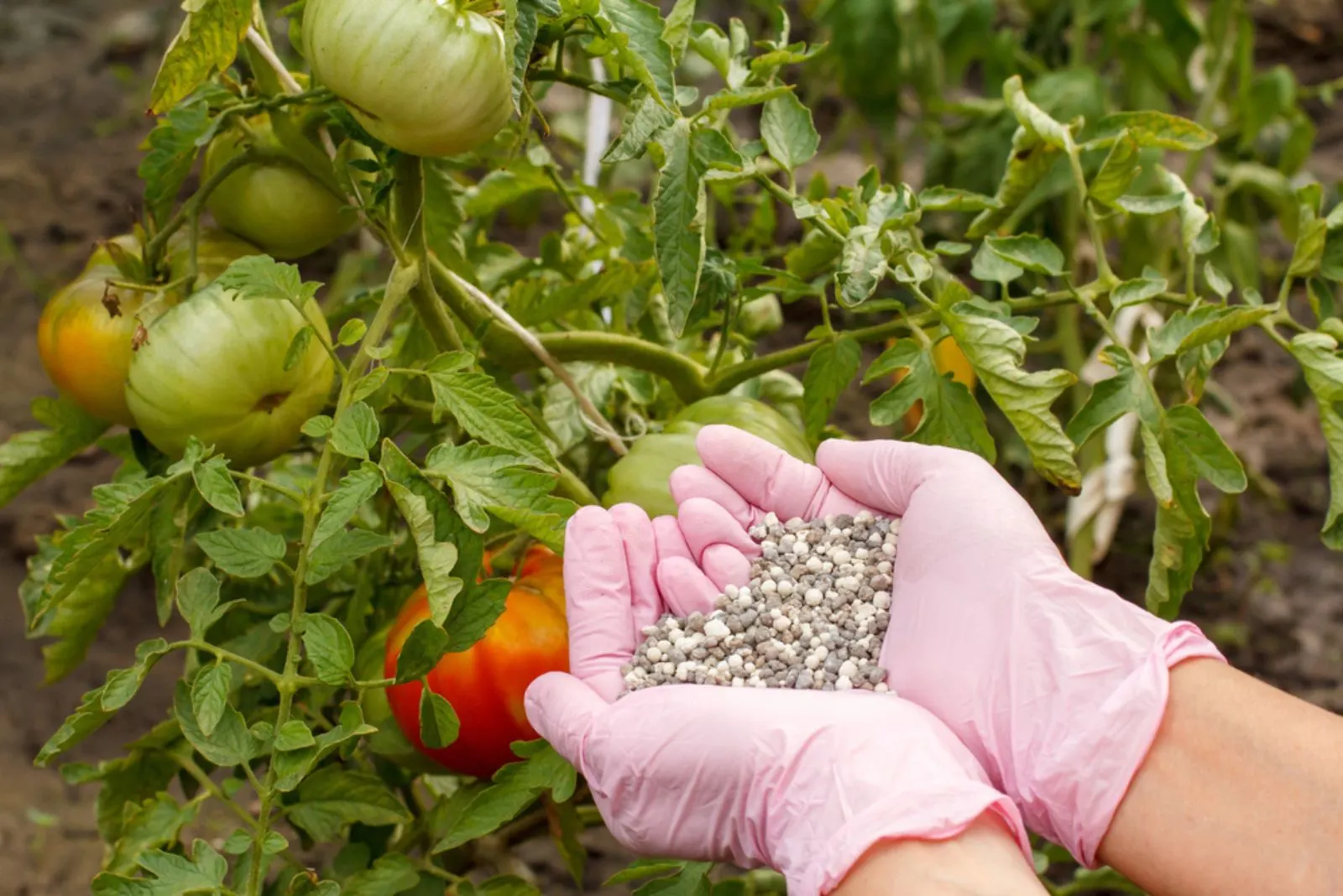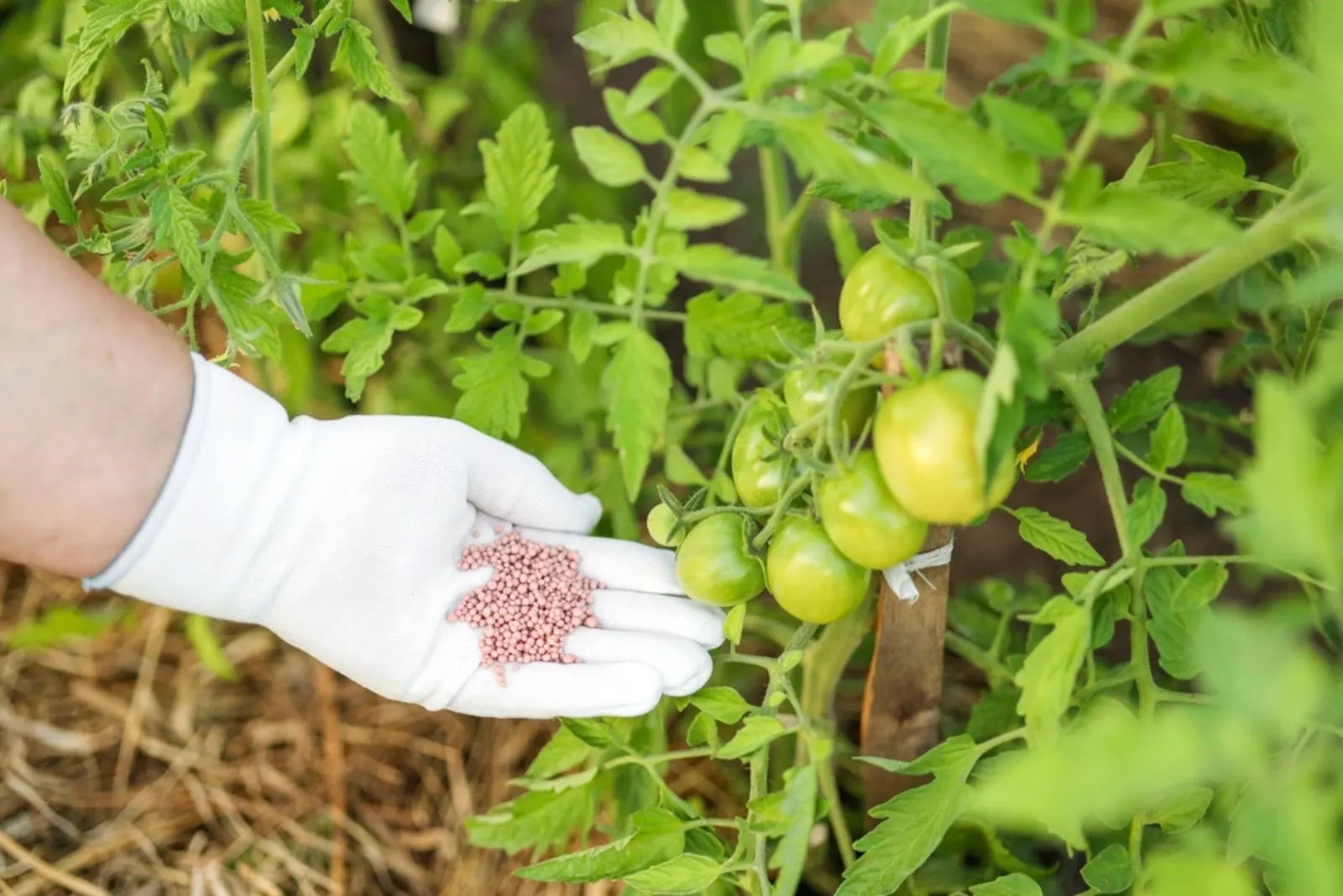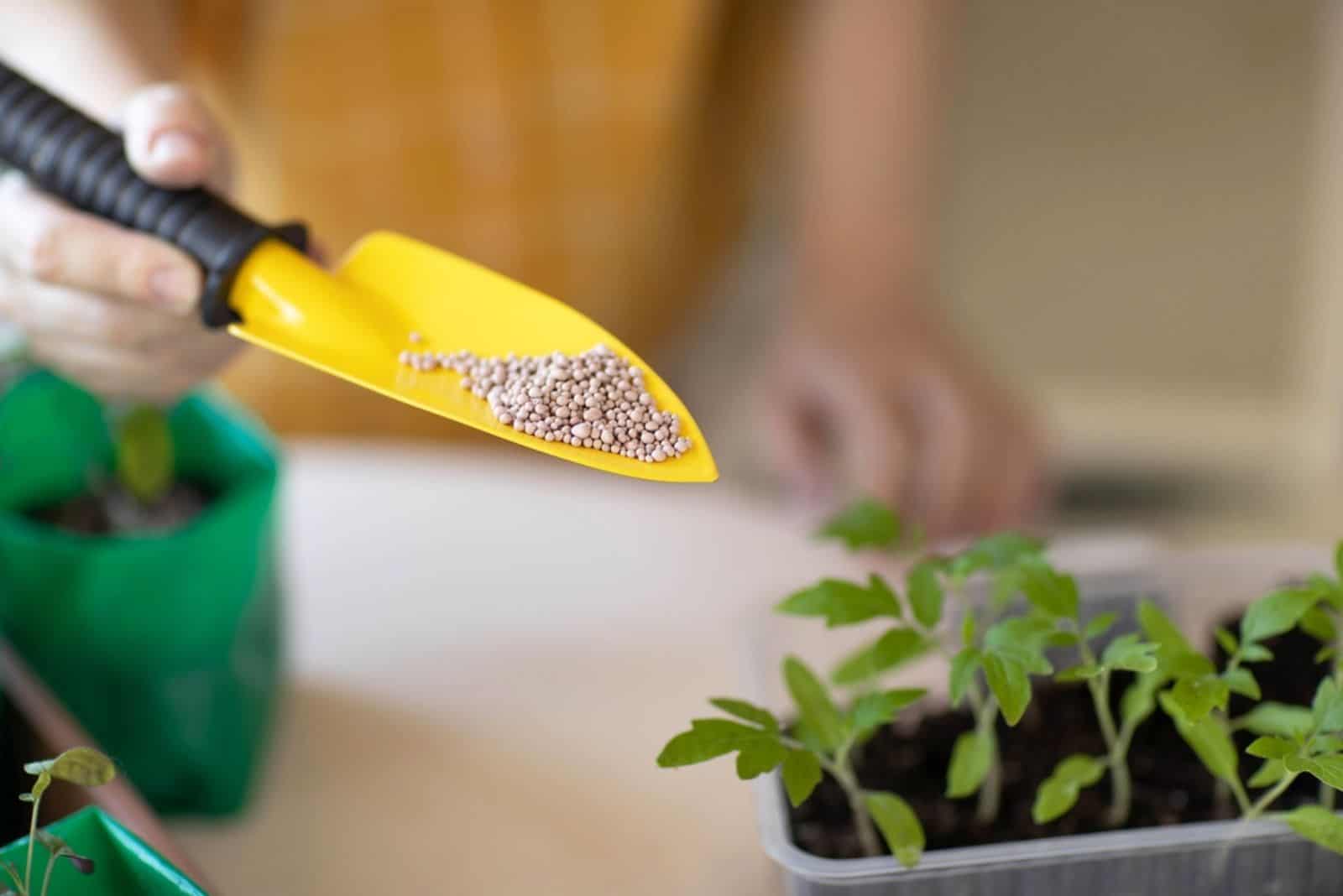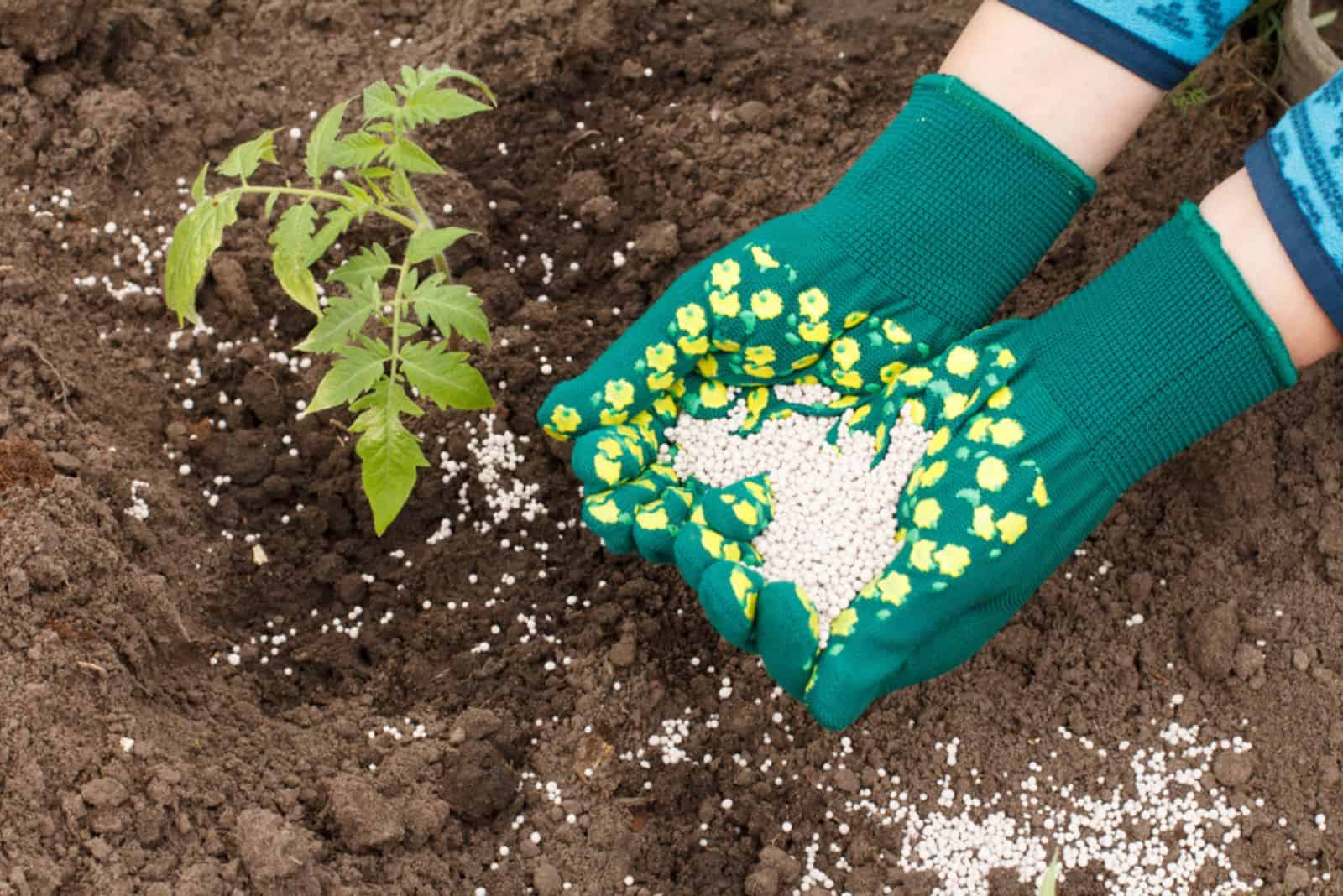If you want to have the best tomato harvest ever, the solution is simple: fertilize them.
The right nutrition will ensure a high yield of plump, juicy tomatoes.
Don’t worry, I’ll show you everything about fertilizing tomato plants, including their nutrient requirements, the best time to feed them, the type of fertilizer to use, and application methods.
Let’s dive straight in!
Are Tomato Plants Heavy Feeders?
I’m sure you’ve already heard that tomatoes are heavy feeders.
They are very nutrient-hungry plants.
It’s essential to understand something about this tomato feature. When we say that a specific plant is a heavy feeder/nutrient-hungry, we mean the high number of nutrients the plant uptakes from the soil. This is exactly what tomatoes do.
The problem is that many gardeners, especially beginners, often misread the term and end up with overfertilized plants, which can have a detrimental effect.
If a plant is considered a heavy feeder, it means it needs to be fed more than once during the growing season.
Feeding tomato plants more than the recommended amount can burn the roots and severely inhibit tomato growth, so let’s first see when to feed these plants.
When To Feed Tomatoes
Fertilizing will ensure you get more tomato plants, but only if you feed them when necessary.
The best fertilizing schedule for these veggies is feeding after planting and before fruiting.
You may have heard or seen that some growers boost the nutrient levels in the soil while transplanting the tomato seedlings. While this can be a successful technique, a couple of things must be considered.
When using this method, growers add fertilizer to the bottom of the soil or mix it in, which increases the risk of fertilizer burn.
The main problem is that newly transplanted plants, including tomatoes, need some time to adapt to their new environment. By feeding them, you increase the chances of transplant shock.
Additionally, some fertilizers are too strong and will damage the delicate tomato roots.
If you want to feed tomato seedlings, it’s best to use organic fertilizers such as compost, bone meal, or worm castings.
I highly recommend you wait approximately a month after planting. Tomatoes are still weak at this point, but not as much as they were immediately after transplantation.
As mentioned, the second application should be done before fruiting. This ensures larger and healthier fruit.
Never wait too long to apply the second round of fertilizer. If your tomato plants are fruiting heavily, fertilizer can damage the fruit.
The Best Fertilizer For Tomato Plants
There are different types of fertilizers, but there are also different types of growers. Some opt for store-bought fertilizers, while others like to make their own.
No matter which type you use, you must understand the nutrient ratio of each fertilizer. Three major nutrients – phosphorus, nitrogen, and potassium – play a crucial role in plant growth, so you first need to check the ratio of these macronutrients before you choose the fertilizer.
Tomatoes will also benefit from micronutrients such as calcium and magnesium, which encourage the healthy development of all plant parts.
Fertilizer For The First Round
In the initial growth stages, particularly when tomatoes display vegetative growth, they’ll require more nitrogen.
A soil test is your best friend right now. If it shows a lack of nitrogen in the soil, use fertilizers with an NPK ratio of 10-5-5.
If the concentration of nitrogen in the soil is sufficient, you can use a balanced fertilizer such as triple 10.
Fertilizer For The Second Round
Once your tomatoes enter the early fruit growth stage, you need to provide them with more phosphorus.
Nitrogen isn’t so important right now because tomatoes must focus their energy on fruit rather than leaf production.
The best NPK ratio for the second fertilizer round is 5-10-10 because it’s rich in phosphorus and potassium, which are responsible for fruit development.
You need to inspect your tomatoes regularly to observe if there are any signs of nutrient deficiency. This will enable you to act in time and supplement the soil with the right nutrients.
If your tomatoes lack calcium, you can use eggshells as a soil amendment. Epsom salt can boost magnesium levels in the soil.
Before you supplement the soil, always perform a soil test! Overfertilization causes way more issues than a lack of specific nutrients.
How To Apply Fertilizer
You’ll find two main types of fertilizer on the market: liquid and granular. The one you choose will determine the application method. Before application, always irrigate the soil to prevent the roots from absorbing the nutrients too quickly.
If using a liquid type, you need to dilute it and then pour it over the soil around the tomato plant base. Make sure to leave some space between the stem and the area where you apply fertilizer.
You can also use granular (aka dry fertilizers), which are typically slow-release. This basically means they release nutrients gradually.
Fertilizing frequency depends on three main factors: soil condition, fertilizer type, and the plant’s overall health.
Never apply fertilizer until you make sure your tomatoes really need it. Perform a soil test and inspect growth regularly because tomatoes will tell you if something is wrong.
Feed your tomatoes following these guidelines and a bountiful harvest is just around the corner!




